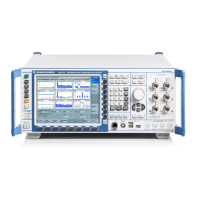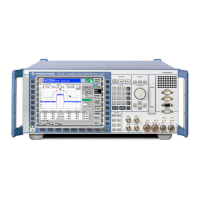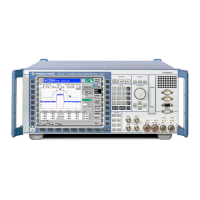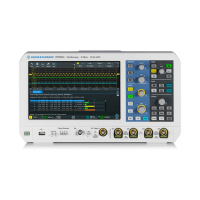System Overview
R&S
®
CMW500
62User Manual 1173.9463.02 ─ 06
Fig. 3-3: Example of limit lines (GSM)
The pass/fail indication in the result tables have the following meaning.
Table 3-1: Pass/fail indication in tables
Symbol Meaning
(no indication) Result passed
Result too large, exceeds upper limit
Result too small, below lower limit
Result too large but not reliable, e.g. because
●
the analyzer is overdriven or underdriven
●
the raw measurement data is possibly invalid
Result too small but not reliable; see above
Result (probably) too large, but no valid result available
Result (probably) too small, but no valid result available
3.2.6 Measurement Triggers
The trigger system synchronizes a particular measurement with events.
The following sources of trigger events are used in many different measurements:
●
The meaning of a "Free Run" trigger is measurement-specific. In most cases, a "Free
Run" measurement is not related to any trigger events: The R&S CMW500 measures
as fast as possible. However, there are exceptions (e.g. WCDMA measurements)
where "Free Run" trigger implies a synchronization to the RF input signal.
●
With an "IF Power" trigger, the measurement is started when the level of the mea-
sured signal crosses a definite "Trigger Threshold" value. This trigger setting requires
an RF input signal with variable power (power ramp, bursts). The trigger event can
be set to occur at the rising or falling edge of the bursts.
●
An "External" trigger is used to synchronize a measurement to external events. E.g.
a DUT providing a frame-periodic RF signal may generate an additional trigger signal
to indicate its frame timing. External trigger signals may be fed to one of the trigger
connectors "TRIG A" or "TRIG B" at the rear panel of the instrument. For configuration
of the connectors see chapter 4.4.7, "Trigger", on page 99.
●
Real-time or ARB generators can generate marker signals, to be used for synchro-
nization of a measurement.
●
Signaling applications provide trigger events which are synchronized to their downlink
(forward link) signals. Due to the known downlink/uplink timing of the mobile station
under test, a signaling trigger is generally appropriate for TX measurements running
Measurements
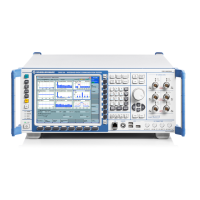
